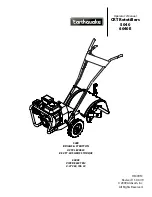
INSTALLATION GUIDE
Instruction Manual
1-888-543-6473
1-888-541-6474
13376 Comber Way
Surrey BC V3W 5V9
[email protected]
www.ortechindustries.com
375 Admiral Blvd
Missis
s
auga
,
ON L5T 2N1
LED Emergency Lights
MODEL
O
E-212BP
Operation
1.
To test, depress the TEST switch. Charge indicator will go out and the DC lamps will come on
2.
Release the TEST switch. DC lamps will be extinguished, and the charge indicator will come on
3.
A bright charge LED indicator light indicates a high charge rate. After the battery has reached full charge, the indicator light
will go out. Under normal operation, the high charge indicator will turn ON and OFF intermittently while the unit is in
standby mode (regular AC is present) since the charge rate will vary in order to maintain an optimal battery performance
Fig.6
Fig.
7
OPERATION AND MAINTENANCE
Maintenance
1. Code requires that the equipment be tested every 30 days for 30 seconds, and that written records be maintained for all
test results and repairs. Furthermore, the equipment is to be tested once a year for the required duration as per Code.
The battery is to be replaced or the equipment repaired whenever the eqeuipment fails to operate as intended during the
duration test. The manufacturer strongly recommends compliance with all Code requirements
2. Clean lenses on a regular basis to provide maximum light distribution in case of an emergency.
NOTE — The servicing of any parts should be performed by qualified service personnel ONLY. The use of replacement
parts not furnished by the manufacturer may cause equipment failure and will void the warranty
Emergency Lamps do not come on at all:
Pilot Light is out before test...
1. Check AC supply — be sure unit has 20 hour AC supply (un-switched)
2. AC supply is OK, and indicator light is out, replace PC Board Assembly. Pilot Light is on before test
3. Either the output is shortened or overloaded, or the battery is not connected
4. Battery is severely discharged. Allow 20 hours for recharge and then retest. NOTE — This could be the result of a switched
AC supply to the unit (which has been turned OFF at some point), a battery with a shortened cell, an old battery or a
battery which has been discharged due to a long power outage and is not yet fully recharged
TROUBLESHOOTING






















